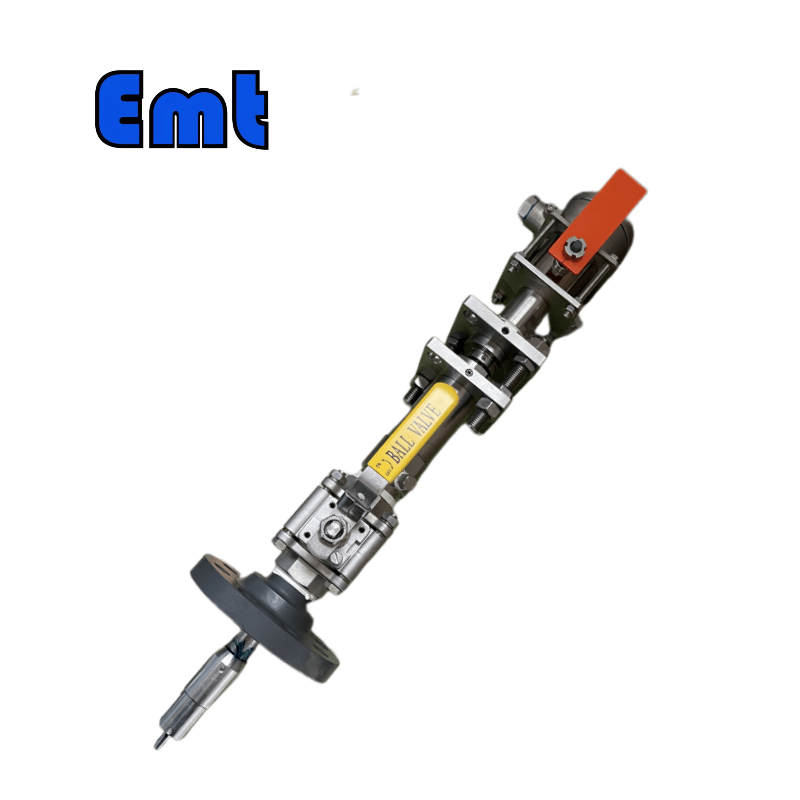Description
1. Introduction to Pig Signaller
Definition and use in pipeline industries
A pig signaller, also known as a pig detector, is a vital device utilized in the pipeline industry. Its primary function is to detect, signal, or confirm the passage of a “pig” through a particular point in a pipeline system. The term “pig” refers to Pipeline Inspection Gauges, special tools that are inserted into and traverse pipelines for various purposes such as cleaning, inspection, and testing.
Pig signallers play a crucial role in pipeline operations as they provide operators with valuable information about the location and movement of the pig within the pipeline. This is particularly important because pigs are used to perform essential maintenance tasks. Such as removing buildup and debris, inspecting the internal condition of the pipeline, or even sealing and pressure testing the pipeline.
Purpose: to detect and signal the passage of a pig in a pipeline
In essence, pig signaller is the eyes and ears of pipeline operators when it comes to monitoring the progress of these critical tools. They provide real-time alerts, either visually, audibly, or electronically, when the pig passes a specific point in the pipeline. This ensures that the pig is functioning correctly and that the pipeline operation is proceeding as planned. If a pig fails to trigger a signaller at the expected time, it can indicate a potential problem. Such as a stuck or lost pig, thereby allowing for timely intervention and problem resolution.
Hence, pig signalers serve as an integral component in maintaining the operational efficiency, safety, and longevity of pipeline systems, making them indispensable in the pipeline industry.
2. Types of Pig Signaller
Intrusive pig signallers

Intrusive pig signallers are a type of pig detection device that physically penetrate the pipeline wall to interact directly with the pig as it passes by. These devices are typically installed at various strategic points along the pipeline where they protrude into the interior of the pipe.
1) Operating Principle
The working mechanism of an intrusive pig signaller revolves around a trigger. Which is usually a mechanical arm or flag that extends into the pipeline. As the pig moves through the pipeline, it makes contact with this trigger, causing a physical action. Such as the flag being flipped or the arm being pushed back. This action then activates the signal mechanism of the device.
2) Signaling Mechanisms
The signal produced can be visual, like a flag indicator on the outside of the pipeline changing position, or auditory. Such as a bell or horn sounding; or electronic, with an alert sent to a control room. The type of signal used often depends on the operational needs and the environmental conditions of the pipeline.
3) Installation and Maintenance
Intrusive pig signalers are known for their reliable and direct detection methods. Because they physically interact with the pig. So they can provide a high degree of certainty that the pig has passed the point of installation. However, they also require careful installation and maintenance to ensure they do not disrupt the pig’s movement or damage the pipeline.
In summary, intrusive pig signalers serve as a reliable method of tracking and signaling pig movement within a pipeline. Despite requiring careful installation and maintenance, they are a popular choice in a variety of pipeline operations due to their direct detection method and versatility in signaling options.
Non-intrusive pig signaller

1) Introduction
The Non-Intrusive Pig Signaller is an innovative tool designed to revolutionize the field of pipeline maintenance and pigging operations. As the name suggests, this type of signaller operates without any physical contact with the pig, ensuring seamless and undisturbed tracking of the pig as it journeys through the pipeline.
2) Operating Principle and Technology
Non-intrusive pig signallers employ advanced technologies, such as magnetic or ultrasonic sensors, to detect the passage of the pig. Magnetic sensors work by identifying changes in the magnetic field as the pig passes. While ultrasonic sensors use sound waves to detect the pig’s presence. This technology-driven approach allows for accurate, real-time tracking of the pig’s location, speed, and progress, providing operators with valuable data for monitoring and managing pigging operations.
3) Safety and Reliability
One of the key advantages of non-intrusive pig signallers is their ability to operate without requiring any intrusion into the pipeline. This feature significantly reduces the risk of leaks or malfunctions, contributing to the overall safety and reliability of the pipeline system. Moreover, non-intrusive pig signallers are particularly useful in high-speed, high-pressure. Or sensitive pipelines where physical contact with the pig is not desirable or feasible.
4) Versatility and Adaptability
Non-intrusive pig signallers are also versatile and adaptable. They can be used with a wide range of pigs and are suitable for a variety of pipeline materials and conditions. This makes them an excellent choice for a broad spectrum of pigging operations. From routine cleaning and maintenance to more complex inspection and testing tasks.
5) Conclusion
In conclusion, non-invasive pig signalers represent a significant advancement in pigging technology. By providing reliable, contact-free tracking in an easy-to-use format. These signalers offer a versatile and efficient solution for modern pipeline management. Their use can enhance the safety, efficiency, and effectiveness of pigging operations. It makes them an indispensable tool for any pipeline operator.
3. Importance of Pig Signaller
Real-Time Tracking
- The importance of Pig Signallers in the pipeline industry cannot be overstated. These devices serve as the eyes and ears of operators during pigging operations, providing vital information and enhancing the overall safety and efficiency of the process.
Pig Signallers serve a critical function in providing real-time tracking of a pig as it navigates through a pipeline. This tracking capability makes it possible for operators to accurately track the pig’s location at any given time. While it is performing cleaning, inspection, or maintenance tasks. Without this real-time tracking, operators would have no way of knowing if the pig is stuck, moving slower than expected, or has passed a specific point in the pipeline, all of which could indicate potential issues that need to be addressed.
- The importance of Pig Signallers in the pipeline industry cannot be overstated. These devices serve as the eyes and ears of operators during pigging operations, providing vital information and enhancing the overall safety and efficiency of the process.
Safety Enhancements
-
Moreover, Pig Signallers play a crucial role in enhancing the safety of pigging operations. If a pig gets stuck or lost in a pipeline, it can cause pressure build-up or blockages. Also leading to potential pipeline failures or accidents. By providing immediate alerts of any irregularities, Pig Signallers allow operators to take swift corrective actions, thereby preventing potential damage to the pipeline and the pig, and mitigating the risk of operational downtime.
-
Operational Efficiency
-
Beyond safety and operational efficiency, Pig Signallers can also yield valuable data for further analysis. The information they provide can work to evaluate the effectiveness of pigging operations, assess the condition of the pipeline, and refine operational strategies. This can lead to improved pig designs, optimized maintenance schedules, and ultimately, more efficient and cost-effective pipeline operations.
In conclusion, Pig Signallers are a vital component in the realm of pipeline maintenance and monitoring. Their ability to provide real-time tracking, enhance safety, and contribute to operational efficiency makes them an indispensable tool for modern pipeline management. As the pipeline industry continues to evolve, the importance of Pig Signallers is set to grow even further.
-
4. Contribution to Industry
Pig Signallers have made a significant contribution to the pipeline industry by enhancing the safety, efficiency, and reliability of pigging operations.
In conclusion, the contribution of Pig Signallers to the pipeline industry is multifaceted and significant. As pipeline systems continue to evolve and grow in complexity, the role of Pig Signallers is set to become even more critical in the future.






Reviews
There are no reviews yet.